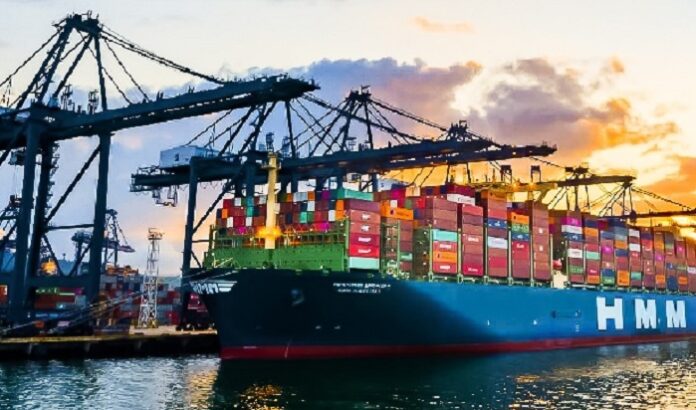
-
HMM will team up with Samsung Heavy Industries and PANASIA in H2 2023 to hold onboard carbon capture system (OCCS) for containerships
-
A feasibility study conducted early on shows OCCS can be installed without changing a ship’s existing equipment and does not hinder vessel stability
-
HMM will also replace the propellers of six containerships with more efficient ones specially designed for slow steaming increase energy efficiency by 8-9%
South Korean ocean liner HMM is planning to test an onboard CO2 capture system (OCCS) for containerships in partnership with Samsung Heavy Industries and PANASIA in the second half of this year.
OCCS is an advanced technology to capture carbon dioxide from greenhouse gas emissions generated during vessel operation to ensure it is not released into the atmosphere. This solution has the potential to play a significant role in reducing CO2 emissions.
HMM, announcing the plan on April 19, said it had conducted a feasibility study with PANASIA on OCCS for its multi-purpose vessel (MPV) since both companies signed a memorandum of understanding last September.
The study showed OCCS can be installed without changing a ship’s existing equipment and does not hinder the stability of vessel operation. The collected carbon liquefies in a pressurized tank and can be used for manufacturing dry ice or to nourish plants on a smart farm on land.
Based on these findings, HMM will install OCCS on its containerships for an operational test with Samsung Heavy and PANASIA later this year. HMM will operate the OCCS while its partners will provide engineering support.
HMM also said it had decided to replace the propellers of six containerships with more efficient ones specially designed for slow steaming. The replacement process will start in 2024. The company expects the change will increase energy efficiency by 8-9%.
“We will continue its efforts on a pathway to carbon neutrality by 2050 based on collaborative work with various industrial players,” an HMM official said.
RELATED READ: Least CO2 emission on FE-USWC lane
Aside from the onboard CO2 capture system, HMM has accelerated its efforts to become an eco-friendly shipping company, reducing carbon emissions to less than half of 2010 levels.
The company said in a press release that the carbon emissions generated when transporting 1 TEU (twenty-foot equivalent unit) of container for 1 kilometer decreased from 68.7 grams in 2010 to 29.05g in 2021, representing a reduction of 57.7% over the last decade.
This result has been achieved amid a more than two-fold increase in fleet capacity, from 337,407 TEUs to 755,209 TEUs in the same period.
Operationally, HMM posted a 34.7% year-on-year jump in revenue to KRW18,587 billion (US$14.54 billion) and said it would stay on the course to enhance its business capability and face the challenges of sliding rates and weak demand.
HMM has constantly upgraded its fleet by securing energy-efficient mega-vessels. It also used premium antifouling paint and modified the bulbous bow’s shape to lessen the hull surface’s frictional resistance.
The company formed a dedicated task force in 2015 for effective energy efficiency management and opened a fleet control center in 2020 that analyzes real-time data about vessel operations to reduce greenhouse gas emissions.
A company official said HMM will continue to engage in activities to reduce greenhouse gas emissions based on data-driven analysis and enhance its environmental capability.
HMM has committed to reaching net-zero carbon emissions across its fleet by 2050. Last February, it signed newbuilding contracts for nine 9,000-TEU methanol-fueled containerships.




